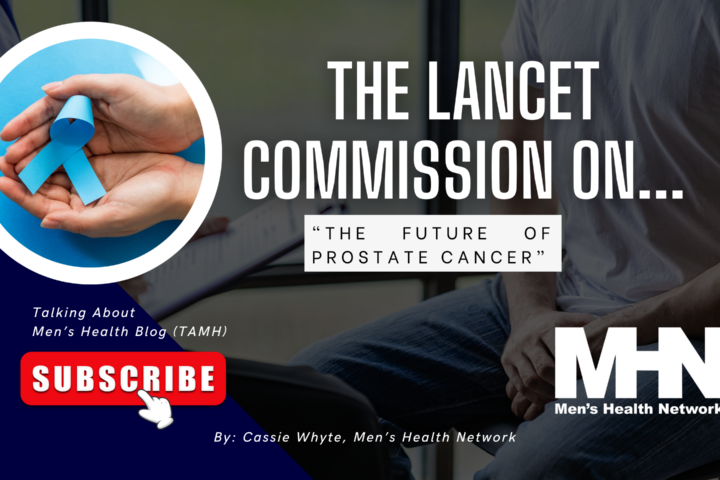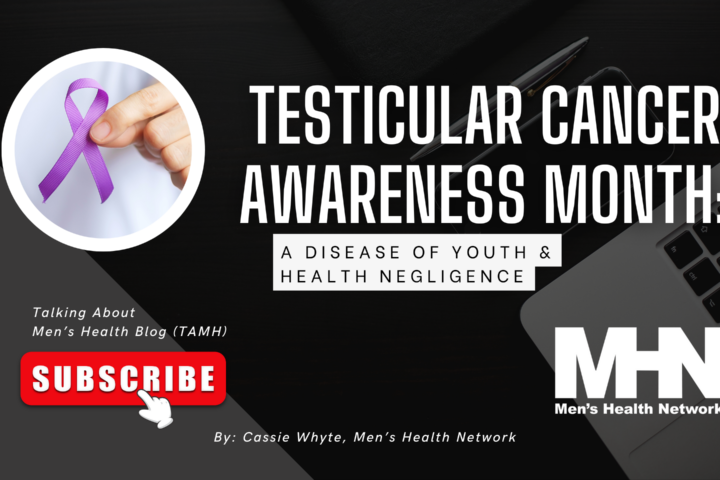The following essay is the first in a new series of authored pieces where Dr. Michael J. Rovito comments on and critiques new research focusing on topics related to men’s health. This commentary series is meant to help translate sometimes confusing, jargon-filled research into a format that is easily digestible by all readers concerned about their health and well being.
We all at least know of, not necessarily abide by, the accepted position of men eating large portions of processed meat and salt each year. Reflect back on any of your recent lunches you ate in the office or perhaps the last pro ball game you attended…what did you eat? Chances are you noshed on some form of processed meat product filled with salt. Processed meat includes hot dogs, lunch meat, smoked meat, corned beef, bacon, sausage, etc.
Men have traditionally been the primary procurer and consumer of the salted, cured meats in society. As I type this, I imagine famous historical men devouring foot long hoagies filled with processed turkey breast or ham as they march their way across history. I could even envision a series of product endorsements: Socrates’ Sub Shack, Attila the Hun’s Salami Siege, or even Harry Truman’s Hot Dog Wonderland.
Whatever the case, men eat a lot of processed meat and salt. What effects these products have on our health over time is up for debate. However, the Canadian Cancer Registries Epidemiology Research Group consisting of Hu, Vecchia, Morrison, Negri, and Mery recently published a research paper entitled “Salt, processed meat, and the risk of cancer” in the European Journal of Cancer Prevention (2010). In this 8-page summary, they reflect upon ‘the association between salt added at the table, processed meat, and the risk of various cancers’.
Believe me when I tell you much of our food is processed. There is indeed a certain veil pulled between us and how our food is produced thus making us more and more removed from how our food is made, distributed, and prepared. The more removed one is from the food production line the higher the chance that person has of eating highly processed foods filled with preservatives and salt. Watching the movie Food, Inc. or reading Michael Pollan’s book In Defense of Food can further enlighten you to this alarming phenomenon.
What Hu et. al. do is add another layer of evidence to the connection between salt, processed meats, and the risk of cancer development. They state that processed food is full of salt, preservatives, nitrates, nitrites, and other fillers thus possibly putting you at higher risk for developing cancer. In terms of methodological problems there seems to be few. They had a large sample size and were systematically diligent in the way the collected their data.
The findings suggest that salt, although statistically significant in terms of having a relationship between exposure to overloads of salt and risk of cancer, it’s not practically significant. What does this mean? Well, the link exists, but it’s not strong…at all.
For example, the odds ratio between stomach cancer and adding salt always/often at the dinner table was significant statistically with an OR = 1.2. Again meaning there is indeed a link between heavy salt intake and cancer but nothing to be concerned about in terms of cancer development. An odds ratio of 1.2 suggests that individuals who developed stomach cancer they were 20% (20 percent) more likely to be a heavy salt user than those who do not have stomach cancer. We would not translate this to 20 times (20x) the risk…just 20% higher risk. There is a huge difference between the two. If the odds ratio was 2.0 then we would say that individuals who developed stomach cancer are twice as likely to be a heavy salt user as those who do not have stomach cancer. That’s something to pay attention to.
The stomach cancer results are mirrored by lung and bladder cancers in regards to heavy salt use. Other cancers were not only practically insignificant but, more importantly, statistically insignificant. The odds ratio values also varied between amount of salt consumed with the heaviest salt intakes demonstrating the highest odds ratios.
In terms of processed meat consumption, the results are a bit stronger in their connection with cancer manifestation. Again, the levels varied with amount of processed meat consumed with the highest levels most associated with cancer risk. As with salt, the values explained below are for the highest consumed levels.
All cancers were statistically significant except for brain cancer. The levels of practical significance varied, but most were stronger than what was seen with heavy salt use. Mostly the digestive cancers had the highest odds ratios with stomach reaching 1.7, colon 1.5, and rectum 1.5, but bladder cancer and leukemia both had odds ratios of 1.6. Again, the data is not extremely practically significant but not to be dismissed. For stomach cancer we would suggest that those individuals who developed stomach cancer were 70% more likely to eat more than 5 ½ servings of processed meat per week than those who do not have stomach cancer. Again, we would not suggest 70 times the risk, just 70% higher chance. Again, the findings are not extraordinary but something to pay attention to.
So what can we learn from this study? You should definitely watch both salt and processed meat consumption. Because although salt has a very, very limited connection to cancer risk, it does raise blood pressure, thus making you more at risk for heart disease. Processed meat on the other hand does have increased risks for cancer manifestation; nothing drastically alarming, but there is a potential risk for developing cancer if eaten a lot over the course of time. Besides the risk of cancer, the ingredients should make you cringe a bit. Have you ever really thought about what was in a hot dog? Kind of frightening, right?
Men, I cannot deny that I enjoy an occasional bacon double cheeseburger but I don’t make a habit out of it. If I go to see the Phillies at Citizen Bank Park, I may eat a hotdog every third time I go. And if I choose to eat a hot dog, I’ll eat a hotdog, not five. It’s all about limiting the amount you eat. It’s about portion control, not elimination.
So next time you think about using the salt shaker or opting for the foot long Italian sub, think about getting the veggie hoagie or a salad. I know, I know, not as appetizing. But do me a favor…for every five sandwiches you eat, eat one salad without meat products on it. Over time you’ll begin to opt more and more for the salad option. Trust me, your guts will thank you.



